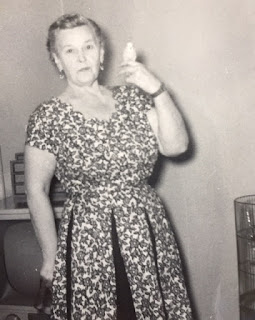In the eight years I've been posting to this, my beloved blog space, I have never had a guest writer. There's a first time for everything, right? I am so excited about the brilliance of this newly released book on story, I've asked author M. L. Welker to say a few words about how the book came to be. Here is his response--and may his words, both here and within the pages of his book, be an inspiration to you:
I’ve
always been fascinated with stories. When I was a little kid, I fell in love
with the fictional worlds of Star Wars, Indiana Jones, and Jurassic
Park. This led me to start writing my own stories and making my own
homemade movies as a hobby. But despite how fun that was, destiny seemed to
have other plans for me. At least at the time. I went off to college to pursue
a “safe” degree and a “normal” job. But the entire time I never lost my
obsession with stories. I kept writing on the side and learning more and more
about the craft and the magic of storytelling.
That we
humans find stories so transfixing is fascinating to me. When a movie starts,
when we read the first few lines of a novel, or when somebody starts to tell us
about “This one time . . .” it’s like our brains switch into story-receiving
mode and we’re locked in. From there, we are transported into story worlds in a
way that makes us feel almost like we are actually there, experiencing it all
right alongside the characters in the story. Well, at least if it’s a good
story.
Which
was what intrigued me most of all. Why were some stories really good and able
to hijack our brains, sucking us into their worlds, while other stories weren’t
and were kind of just boring? And why were some stories so good that even
repeat readings and viewings didn’t diminish their appeal? They are still
engaging and fun even though we already know everything that happens. Why?
This
began a lifelong obsession for me: What makes stories tick and why are the
great ones so great? How do they do it?
It was
really exciting when I found out there have been books written about this very
thing. It turns out many other folks have had an interest like me and analyzed
stories to find something of a secret formula. I pounced on these books. Some
of them were paradigm-shifting for me (like Save the Cat!). But not all
of them clicked. And some of them just made me wrinkle my nose. I felt like
they just weren’t quite talking specifically enough about what I was interested
in. Or at the very least they weren’t convincing me with their analyses. And
all of them (even Save the Cat!) were woefully deficient when it came to
helping me write my own stories.
It soon
became clear that to get the answers I was looking for, I was going to have to
go find them on my own.
Thus
began the journey that culminated in the creation of my own book on the craft
of storytelling: Blockbuster Blueprint.
I
didn’t start out wanting to write a book. At first I was just frustrated with
the existing material and decided to do my own investigation and write down my
findings. I’d use these personal notes to help myself with my own stories and
that would be that.
But as
I poured over stories and analyzed them, my notes grew and grew. Eventually I
had enough notes that folks started asking to see them and suggesting I turn them
into a book.
And
this struck a chord. This made perfect sense. These notes were, after all, my
own personal answer to the missing material I was after. So if I wasn’t
thrilled with the other books about story out there, it stood to reason there
would probably be other writers who felt the same way. In the end, it seemed
rather selfish to keep my findings and writings all to myself. So, I spent four
years working on transforming those notes into a book.
And now
the real fun begins. With Blockbuster
Blueprint now published, I can start using the lessons it teaches to write
even better stories than ever before. And the best part is, so can anybody else
who reads it. Which is great because if it helps other writers make their
stories better, all the readers, movie-watchers, and all-around story lovers
out there benefit. Myself included. And the world could always use more good
stories.
























